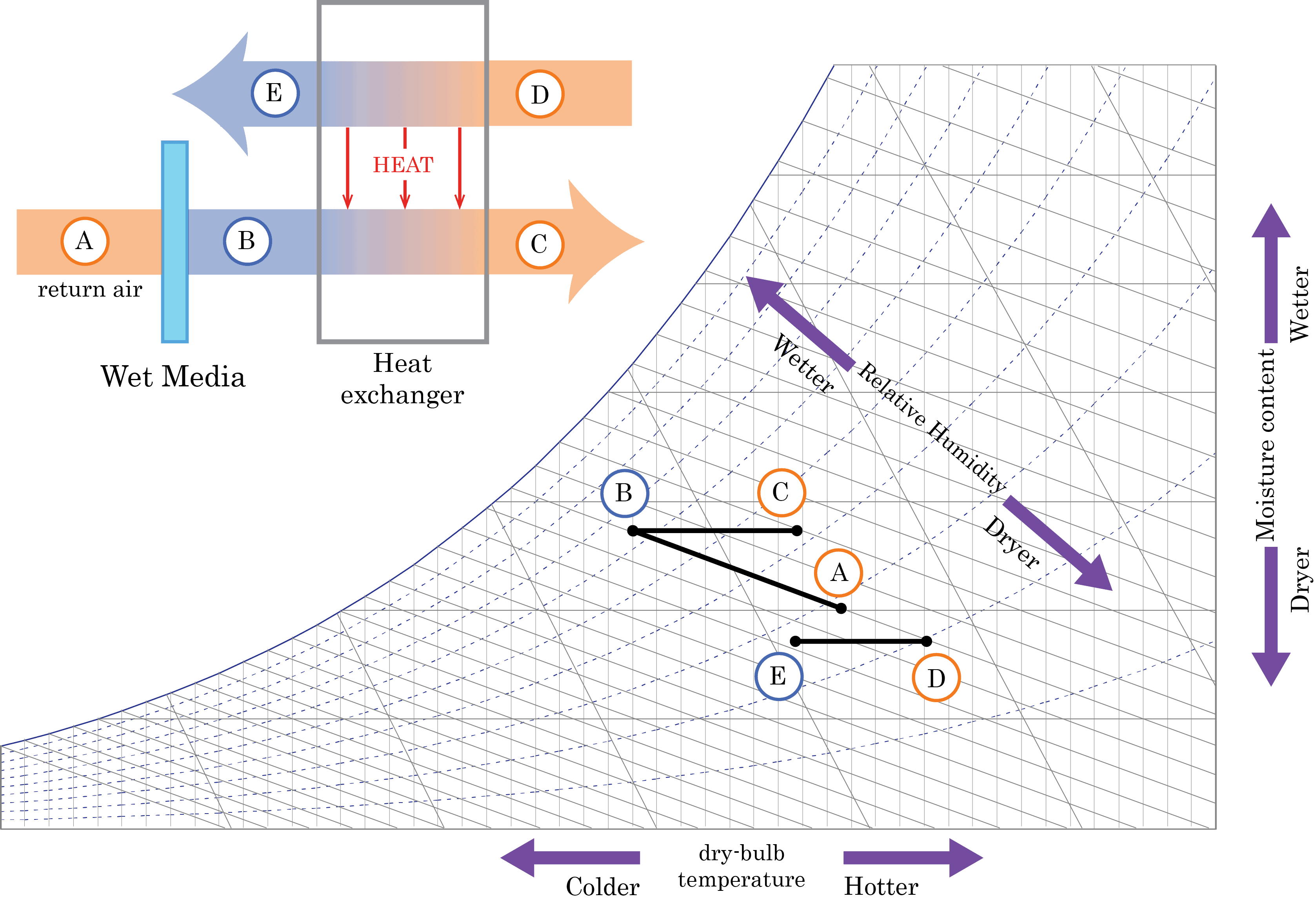A psychrometer for HVAC measures humidity, temperature, and calculates dew-point and wet-bulb temperatures. It’s a versatile diagnostic tool for indoor environmental monitoring, essential for air conditioning system design and thermal comfort considerations.
Psychrometry is crucial for understanding moist air behavior and predicting environmental changes. Air conditioning engineers rely on psychrometric charts to anticipate shifts in heat and moisture levels within a space. Utilizing a psychrometer aids in maintaining optimal indoor conditions and improving overall HVAC system efficiency.
Whether measuring relative humidity or assessing ambient temperatures, a psychrometer offers valuable insights for HVAC professionals seeking to optimize indoor environments.

Credit: diyhomecomfort.com
Understanding Psychrometry
Psychrometry is the study of moist air, focusing on the relationship between air temperature, humidity, and pressure.
Psychrometry plays a crucial role in HVAC systems, influencing the design and operation of air conditioning units.
Understanding psychrometry in HVAC is essential for ensuring optimal indoor air quality and thermal comfort.
In HVAC systems, psychrometry helps in calculating dew-point and wet-bulb temperatures, which are vital for maintaining ideal environmental conditions.
A psychrometer is a versatile tool used for measuring various parameters such as relative humidity, dry-bulb temperature, dew-point, and wet-bulb temperatures.
Psychrometric charts are commonly used by HVAC engineers to predict changes in the environment based on alterations in heat and moisture levels in the air.

Credit: dehumidifiercorp.com
Functionality Of A Psychrometer
A psychrometer is a vital tool in HVAC systems that helps in measuring various important parameters for maintaining indoor comfort levels. Let’s delve into the functionality of a psychrometer:
Measurement Abilities
- Relative Humidity: Indicates the moisture content in the air.
- Dry-Bulb Temperature: Represents the ambient temperature in the room.
- Wet-Bulb Temperature: Measures the temperature when water evaporates to reach equilibrium.
- Dew Point Temperature: Shows the temperature at which air becomes saturated with moisture.
Practical Usage In Hvac
A psychrometer finds practical application in HVAC systems for:
- Ensuring optimal indoor humidity levels for comfort and health.
- Aiding in the design and operation of air conditioning systems.
- Helping HVAC technicians in diagnosing and troubleshooting issues.
Types Of Psychrometers
Psychrometers are essential tools in the HVAC industry, used for measuring various parameters such as relative humidity, temperature, dew point, and wet bulb temperature. There are different types of psychrometers available, each serving a specific purpose in the field of heating, ventilation, and air conditioning (HVAC). Let’s explore the two main types of psychrometers: analog and digital.
Analog Psychrometers
Analog psychrometers are traditional devices that rely on the movement of mercury or alcohol to measure the relative humidity and temperature. These handheld instruments consist of a dry bulb thermometer and a wet bulb thermometer, which are fundamental components for determining the psychrometric properties of air. An analog psychrometer requires manual readings and is commonly used for basic environmental monitoring.
Digital Psychrometers
Digital psychrometers, on the other hand, utilize advanced technology to provide accurate and fast measurements of various air parameters. These modern psychrometers come with digital displays, enabling users to read relative humidity, temperature, dew point, and wet bulb temperature with precision. Some digital psychrometers may also offer additional features such as data logging, Bluetooth connectivity, and built-in calculation functions, making them highly efficient tools for HVAC professionals.
Choosing The Right Psychrometer
Choosing the right psychrometer for HVAC is essential for accurate indoor climate monitoring. This diagnostic device measures relative humidity, ambient temperature, and calculates dew-point and wet-bulb temperatures in both Celsius and Fahrenheit, making it an indispensable tool for air conditioning engineers.
Factors To Consider
Choosing the right psychrometer for your HVAC needs is crucial to ensure accurate and reliable measurements. There are several factors to consider when selecting a psychrometer:- Accuracy: The accuracy of the psychrometer is paramount. Look for models that have a high level of accuracy in measuring both temperature and humidity. This will ensure that you get precise readings for your HVAC system.
- Range: The range of the psychrometer is another important factor to consider. Make sure that the temperature and humidity ranges provided by the psychrometer are suitable for the environment you will be working in. Different HVAC systems may require different ranges, so choose accordingly.
- Display: The display of the psychrometer should be clear, easy to read, and preferably backlit. This will allow you to easily read the measurements even in low light conditions. A digital display is often preferred as it provides more accurate readings and is easier to use.
- Build Quality: Consider the build quality of the psychrometer. It should be durable and able to withstand harsh conditions. Look for models that are made from high-quality materials and have a sturdy construction.
- Features: Different psychrometers offer various features that can enhance its functionality. Some features to look out for include data logging capabilities, adjustable emissivity for infrared temperature measurement, and built-in alarm systems.
Popular Brands And Models
There are several popular brands and models of psychrometers available on the market. Here are a few options to consider:| Brand | Model | Price (USD) |
|---|---|---|
| Yellow Jacket | Digital Psychrometer Thermo-Hygrometer | $136.85 |
| Eray | Temperature and Humidity Gauge Meter | $29.99 |
| BuildingHVAC.com | Psychrometer / Anemometer | $150.92 |

Credit: www.amazon.com
Frequently Asked Questions On Psychrometer Hvac
What Is A Psychrometer Used For In Hvac?
A psychrometer in HVAC is used to monitor indoor climate by measuring relative humidity and room temperature, while also calculating dew-point and wet-bulb temperatures. HVAC engineers use it to predict environment changes when heat and moisture levels in the air change.
What Is Psychometric In Hvac?
A psychrometer in HVAC measures indoor climate, relative humidity, and calculates dew-point and wet-bulb temperatures for environmental monitoring.
What Was The Psychrometer Used For?
A psychrometer is used to measure air humidity levels for indoor climate monitoring in HVAC systems.
What Is The Psychometric Test For Hvac?
A psychometric test for HVAC measures air humidity. It’s essential for environmental monitoring, predicting air conditioning changes and thermal comfort.
Conclusion
A psychrometer is an essential tool for HVAC professionals to measure air humidity and determine the thermal comfort of indoor environments. It provides comprehensive data, including relative humidity, dew-point, and wet-bulb temperatures, crucial for accurate air conditioning system design and monitoring.
Investing in a quality psychrometer is key to maintaining optimal indoor climate conditions.

